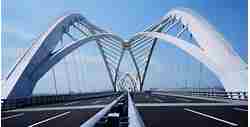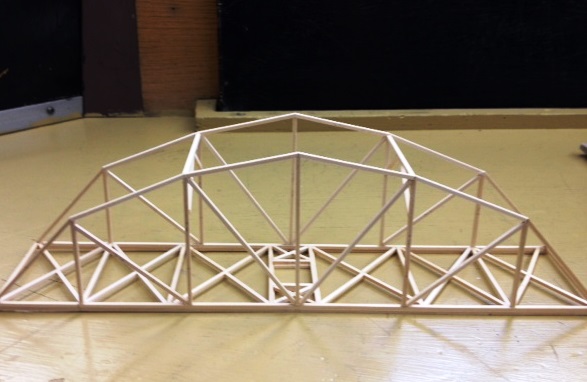Courses by Software
Courses by Semester
Courses by Domain
Tool-focused Courses
Machine learning
POPULAR COURSES
Success Stories
Week 8 - Challenge 2 - Switch Bezel Design
Report:– Objective: The main objective of this challenge is to create the Switch Bezel Plastic component through the above-given Class-A surface, by giving the Tooling axis and 'Draft analysis' to the class-A surface of the base bracket. TOOLING AXIS: We should deeply observe and study the class A surface…
Vijay s
updated on 19 Nov 2022
Report:–
Objective:
- The main objective of this challenge is to create the Switch Bezel Plastic component through the above-given Class-A surface, by giving the Tooling axis and 'Draft analysis' to the class-A surface of the base bracket.
TOOLING AXIS:
- We should deeply observe and study the class A surface to create the 'Tooling Axis' for the component, for the above-given Switch Bezel Z-axis is the not suitable tooling axis. Because the flat surface of the component is tillted in some angle, so the line will be created in normal to surface.
There are 3 types of Tooling axis can created based on giving model,
- Point To Direction
- Bisecting Method
- Normal To Surface

DRAFT ANALYSIS:
The draft analysis technique is used to analyze whether our part model created in CAD is manufacturable based on the draft condition applied. Here the part should get easily removed from the panel Mold in case of plastic core and cavity
To perform draft analysis
click on Insert >>Analysis >> Feature Draft Analysis
- Once the draft analysis toolbar is opened, go to the display block and select the 'Analysis under the running point' command to check the angle for different sides (ribs and inclined plane angles) on the class A surface. The color scale on the bottom visualizes, whether the draft angle meets the requirements or not (3 deg) by indicating the colors Green, Blue and Red. Once the draft angle analysis was done, we need to align and fix the compass to the tooling axis of the class A surface.

MATERIAL SELECTION:
Acrylonitrile Butadiene Styrene
- ABS offers a good balance of impact, heat, chemical and abrasion resistance, dimensional stability, tensile strength, surface hardness, rigidity and electrical characteristics. ABS plastic remains hard, rigid and tough even at low temperatures. It is available in fire-retardant, heat-resistant and platable grades.
CLASS B SURFACE:
B surface means thickness of a part it is not visible it is inside part. It will shows that core side of the plastic model.
- To create the class B surface, I considered the entire surface has 3 parts 'Rib-1, Rib-2, and Base surface'. If we directly offset the class A surface, fillets may lead to cause an error, to avoid the errors we need to extract the surfaces and untrim the extracted surfaces and extrapolate those untrimmed surfaces with point continuity. Now trim those extrapolated surfaces to the required shape. And finally, fillets were given to the final trim.
OPERATION'S in Class B Surface:
- Extract & Untrim
- Offset & Trims
- Fillets



Class C Surface:
The Class C finish allows more imperfections than Class A or B. Class C is often specified for interior surfaces not readily visible, surfaces that will be covered by another part when assembled, or surfaces which the Customer feels do not need to meet a high cosmetic finish.
- It is the combination of Class A, Class B and Class C surfaces. To create a class C surface, I used the sweep command by considering the outer boundary of the class A surface. In the sweep command, go to the 'line' command in the 'profile' block and the subtype is 'with draft direction'. Now select the outer boundary and tooling axis, give 3 deg in the angle (the draft angle for a plastic component is 0.5 to 3 deg) and select the direction to sweep, in this condition the class B surface is under the class A surface so select the inside down arrow to sweep. The same procedure is repeated for the two circles on the class A surface.
OPERATION'S in Class C Surface:
- Boundary
- Smooth curve
- Sweep
- Extrapolate
- Trim

Final Trim (closed body):
- Now I joined all the swept surfaces by using the 'join' command and then I trimmed the Class A, Class B and Class C surfaces to make a closed surface, to make a Solid body.



SOLID BODY:

DRAFT ANALYSIS:
- To align and fix the compass to the tooling axis, go to the Direction block in the draft analysis toolbar and click on the 'Use the compass to define the new current draft direction option (or just click on the compass symbol). Now bring the compass to the surface and align it to the tooling axis of the class A surface and click on the lock symbol beside the compass in the direction block. Once we click on 'ok' on the draft analysis toolbar, we can finish the draft analysis process.


TREE STUCTURE:

Leave a comment
Thanks for choosing to leave a comment. Please keep in mind that all the comments are moderated as per our comment policy, and your email will not be published for privacy reasons. Please leave a personal & meaningful conversation.
Other comments...
Be the first to add a comment
Read more Projects by Vijay s (10)
Week 9 - Project - A pillar Design with Master Section
A pillar Design with Master Section 1] Master Section Master sections are the guides for design requirements that decide the component packaging after technical (Styling, Concept, or Class-A) surfaces. Creating this master section should need 5 to 6 years of experience. This helps you to decide the feasibility, clearance,…
02 Dec 2022 04:30 AM IST
Week 9 - Project 1 - Door Trim Lower with Engineering Features
OBJECTIVE: The main objective of this challenge is to create the Door Trim component through the above-given Class-A surface, by giving the Tooling axis and 'Draft analysis' to the class-A surface of the bumper. TOOLING AXIS: We should deeply observe and study the class A surface to create the 'Tooling Axis'…
28 Nov 2022 10:54 AM IST
Week 9 - Attachment Feature Creation - Challenge 2
AIM: To Create theDoor Trim Component from the given Class-A surface. To Create the Tooling axis for the given Class-A Surface meeting the requirements of the draft angle. To perform the Draft analysis on the model. To Create the B Side Feature in the component by following the design rules. DESCRIPTION: 1.…
24 Nov 2022 09:40 AM IST
Week 9 - Attachment Feature Creation (Ribs & Screw Boss) - Challenge 1
AIM: Create the rib for the Drill Handle considering the design rules. Tooling Axis creation: It is defined as the direction in which the mould/core and cavity open. Selection of the direction of the tooling axis depends on the ease at which components can be easily ejected. By analysing the component the most easily…
23 Nov 2022 12:51 PM IST
Related Courses






0 Hours of Content

Skill-Lync offers industry relevant advanced engineering courses for engineering students by partnering with industry experts.
Our Company
4th Floor, BLOCK-B, Velachery - Tambaram Main Rd, Ram Nagar South, Madipakkam, Chennai, Tamil Nadu 600042.
Top Individual Courses
Top PG Programs
Skill-Lync Plus
Trending Blogs
© 2025 Skill-Lync Inc. All Rights Reserved.








